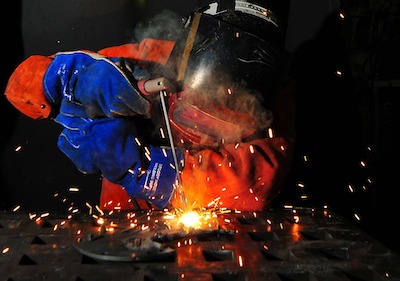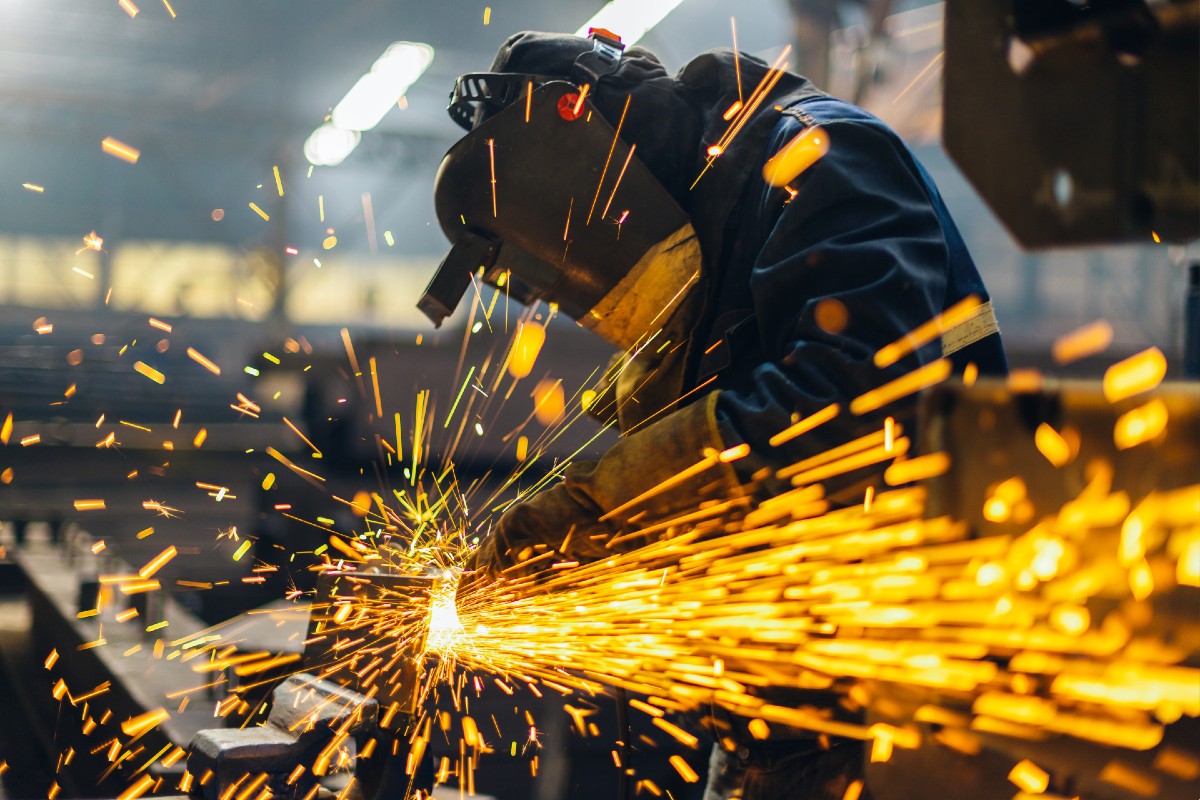Everything about Welding: Trick Insights Into Techniques and Ideal Practices for Success
Welding incorporates a selection of strategies, each matched for details materials and applications. Comprehending these techniques, such as GMAW, SMAW, and TIG, is crucial for attaining ideal outcomes. In addition, the ideal tools and security methods can not be forgotten. As preparation and troubleshooting play crucial duties in the welding process, understanding these components can considerably improve the high quality of the final item. What are the crucial elements that guarantee an effective weld?
Comprehending Different Welding Techniques
Welding techniques include a range of methods, each matched to certain applications and materials. Amongst the most common strategies are Gas Metal Arc Welding (GMAW), Secured Metal Arc Welding (SMAW), and Tungsten Inert Gas Welding (TIG) GMAW, also referred to as MIG welding, is prominent for its rate and convenience, making it suitable for thin products. SMAW, or stick welding, is favored for its simpleness and effectiveness in exterior environments, specifically with thicker metals. TIG welding supplies precision and control, making it ideal for elaborate job and non-ferrous metals (Montana Mobile Welding and Repair Belgrade). Each strategy has its special benefits and factors to consider, allowing welders to select the very best technique based upon the project's demands, product type, and preferred end results. Understanding these techniques is crucial for successful welding
Essential Welding Tools and Devices
While different welding methods need specific abilities, the best devices and devices are similarly essential for accomplishing quality results. Essential welding equipment consists of welding machines, which differ depending upon the method-- such as MIG, TIG, or stick welding. Protective equipment, including handwear covers, helmets, and aprons, guarantees safety and security and comfort during the procedure. Additionally, clamps and components assist safeguard materials in position, ensuring precision in welds. Consumables like welding poles, cord, and protecting gas are likewise critical elements that affect the high quality of the weld. Devices such as cutters and grinders promote surface prep work and post-weld finishing, contributing to an expert end result. Investing in top quality tools eventually enhances the effectiveness and efficiency of welding projects.
Security Practices in Welding
Proper security methods are vital in the welding sector to shield workers from potential dangers. Welders need to use appropriate personal protective equipment (PPE), consisting of helmets with proper shading, gloves, and flame-resistant clothing. Ample air flow is crucial to minimize direct exposure to unsafe fumes and gases produced during the welding procedure. Furthermore, workers must be trained in the right handling of welding equipment to stop accidents. Fire precaution, such as keeping flammable products away from the welding area and having fire extinguishers conveniently offered, are essential. Regular evaluations of tools and work areas can assist determine possible dangers prior to they cause accidents. By sticking to these security methods, welders can develop a more secure working atmosphere and reduce dangers connected with their trade.
Preparing Materials for Welding
Preparing products for welding is a crucial action that substantially influences the quality and integrity of the final product (Belgrade Fabrication). Appropriate preparation involves cleaning up the surfaces to eliminate contaminants such as oil, dust, and rust, which can endanger the weld. Strategies such as grinding, sanding, or making use of solvents are frequently used to achieve a clean surface area. In addition, guaranteeing that the materials fit with each other well is important; spaces can lead to weak welds. It's additionally crucial to consider the placement and positioning of the elements, as this will certainly influence the simplicity of welding and the final outcome. Selecting the ideal filler material and making sure compatibility with the base metals is crucial for achieving strong, sturdy welds.
Tips for Achieving High-Quality Welds
Attaining top quality welds requires focus to information and adherence to best practices throughout the welding process. Proper joint preparation is crucial, ensuring surface areas are clean and complimentary from pollutants. Choosing the ideal filler product and welding strategy based on the base metals is vital for suitable bonding. Maintaining constant traveling rate and angle while welding can promote and protect against issues harmony. Additionally, regulating warmth input is crucial; too much warmth can cause bending and compromised joints. If necessary, on a regular basis evaluating the welds throughout the procedure allows for prompt modifications. Employing ideal post-weld therapies, such as cleaning and stress and anxiety alleviation, can boost the longevity and stability of the weld, eventually ensuring an effective outcome.
Repairing Common Welding Issues
Welding frequently presents challenges that can influence the top quality and stability of the last item. Usual issues such as porosity, inconsistent weld beads, and getting too hot learn the facts here now can emerge, each requiring certain fixing techniques. Recognizing these problems is necessary for welders to boost their skills and achieve perfect results.
Porosity Issues Discussed
Porosity can commonly be neglected, it continues to be an essential problem in welding that can compromise the honesty of a finished item. Porosity refers to the visibility of small gas pockets within the weld bead, which can damage the joint and lead to early failure. This trouble usually arises from pollutants, moisture, or incorrect securing gas coverage during the welding procedure. To mitigate porosity, welders must verify that the base materials are dry and tidy, utilize proper shielding gases, and keep consistent welding specifications. Frequently inspecting the devices and atmosphere can also help recognize potential issues prior to they show up in the weld. Addressing porosity successfully is crucial for achieving strong, sturdy welds that meet quality standards.

Irregular Weld Beads
Irregular weld grains can significantly impact the quality and toughness of a completed product. Various variables add to this issue, consisting of incorrect travel speed, wrong amperage setups, and inconsistent electrode angles. When the welder relocates as well quickly, a grain may show up slim and lack penetration, while relocating as well slowly can cause extreme accumulation. Additionally, utilizing the incorrect amperage can lead to either undercutting or too much spatter, both of which compromise weld integrity. The welder's strategy, such as inconsistent torch activity, can additionally result in irregular bead look. To reduce these troubles, welders must focus on maintaining consistent, regulated motions and guaranteeing correct equipment setups to achieve uniformity in their welds. Uniformity is key to attaining strong and reputable welds.
Overheating and Bending Issues
Extreme warm during the welding process can lead to significant getting too hot and deforming issues, affecting the structural investigate this site stability of the work surface. These issues usually materialize as distortion, which can endanger placement and fit-up, making more assembly testing. Factors contributing to overheating consist of the option of welding criteria, such as voltage and take a trip speed, as well as the kind of material being bonded. To minimize these concerns, welders should preserve constant travel rate and proper warm input while monitoring the workpiece temperature level. Additionally, preheating or post-weld heat treatment can help minimize stress and anxieties brought on by rapid cooling - Fabrication. Regular assessment and adherence to finest methods are necessary in protecting against getting too hot and making certain the longevity and integrity of bonded structures
Frequently Asked Questions
What Are the Job Opportunities in the Welding Sector?
The welding market offers varied occupation chances, including placements as welders, teachers, inspectors, and designers. Specialists can operate in manufacturing, building and construction, aerospace, and vehicle industries, taking advantage of solid demand and affordable salaries in numerous roles.
Just How Can I Enhance My Welding Rate Without Compromising Quality?
To boost welding speed without sacrificing top quality, one must practice reliable methods, maintain tools, enhance settings, and enhance hand-eye coordination. Normal training and seeking comments can also greatly add to accomplishing faster, high-quality welds.
What Certifications Are Readily Available for Welders?
Countless qualifications exist for welders, including click those from the American Welding Culture (AWS), the National Facility for Building And Construction Education and Study (NCCER), and different industry-specific organizations. These qualifications enhance employability and demonstrate ability effectiveness.
How Does Welding Impact the Residences of Metals?
Welding affects the homes of steels by modifying their microstructure, which can lead to modifications in solidity, toughness, and ductility. Warm input and air conditioning prices throughout the procedure significantly impact these material attributes.
Can I Bonded Dissimilar Metals With Each Other?
